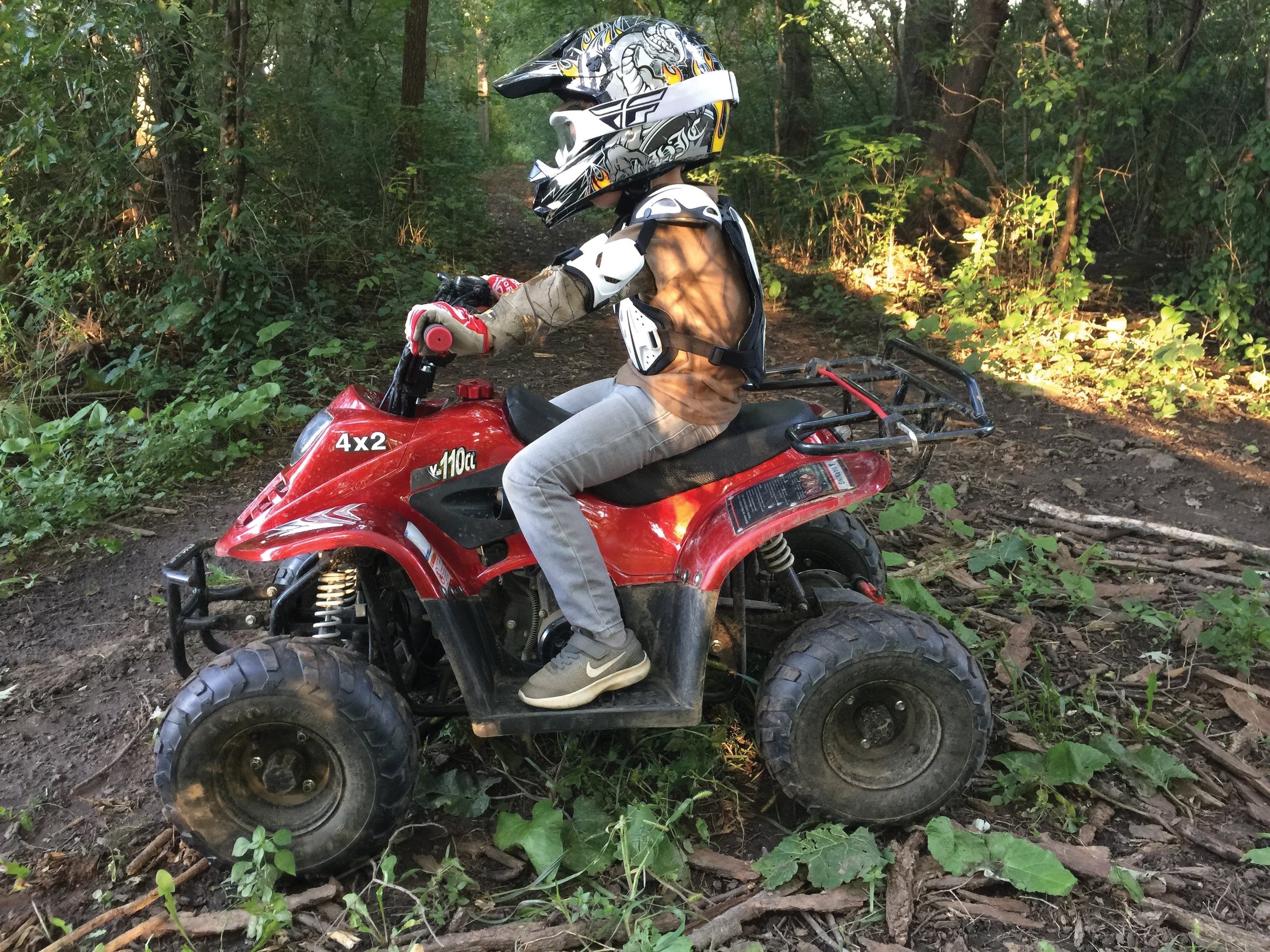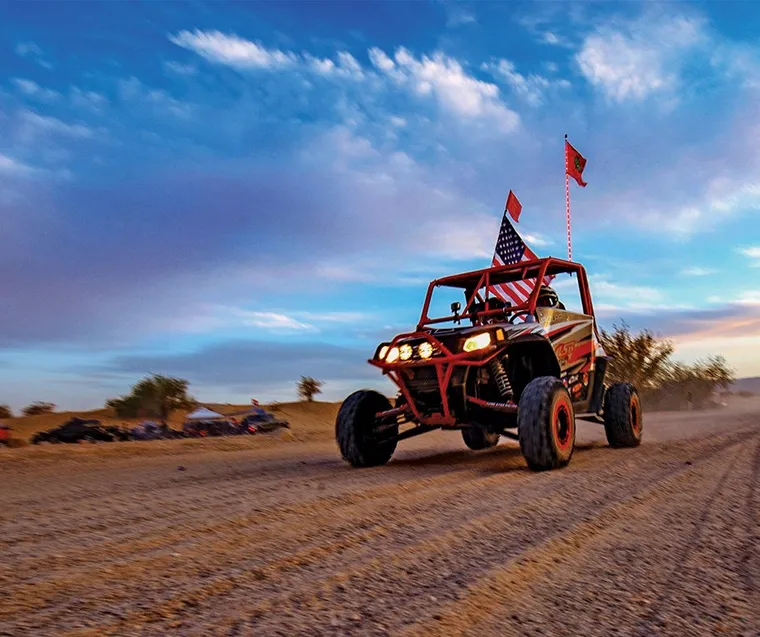Finding balance between ATV use and nature conservation
ATV riding continues to be a popular American pastime—one that is often of tremendous value for many states.
“Recreation in Idaho is a billion-dollar industry, and communities know that motorized recreationists bring with them funds to spark the local community,” says Chelsea Chambers, Public Information Specialist for the Idaho Department of Parks and Recreation (IDPR).
But the prevalence of ATVs and other off-highway vehicles (OHVs) creates some tension between the permitting of fun outdoor activity and preserving nature. Various park systems across the country are managing these competing priorities in different ways.
Designating Space For ATVs
While it’s widely understood that ATV use must be limited to specific areas or properties in order to protect natural habitats, it is different in practice, depending on the park system.
The Minnesota Department of Natural Resources (DNR) has about 80 OHV trails throughout the state, with most in forests and in the Iron Range State Recreation Area, which is specific for ATV and OHV use. With a handful of exceptions, ATV use isn’t permitted in state parks.
These ATV areas are divided into three categories:
- Managed, where ATVs are allowed on roads and trails not posted as closed
- Limited, where ATVs are allowed on roads and trails posted as open
- Closed, where no ATVs are allowed at all.
Many county forest lands also use a similar classification system.
Along the same lines, Idaho’s trails are also delineated:
- Single Track, for dirt bikes
- ATV, for ATVs or UTVs under 50 inches, as well as motorbikes
- Roads, for vehicles larger than 50 inches or any other vehicle type.
Riders are largely responsible for knowing which trail type is most appropriate for their vehicles.
Conversely, California State Parks operates nine sanctioned parks known as state vehicular-recreation areas, or SVRAs. The SVRAs span the length of the state, from the Clay Pit SVRA in Oroville in northern California, to the Heber Dunes SVRA, two miles from the Mexican border.
Unlike the more common method of designating ATV trails within parks, SVRAs were built to prioritize OHVs, while still permitting some additional outdoor activities. For example, the Hungry Valley SVRA, located at the Tejon Pass in northern Los Angeles and Ventura counties, boasts 19,000 acres and 130 miles of trail for off-road vehicles. But visiting the site’s native oak preserve requires a journey on foot.
“[Riders] actually have to leave their vehicles at a gate and then they have to walk in,” says Peter Ostroskie, Education and Program Manager for the California State Parks Off-Highway Motor Vehicle Recreation (OHMVR) Division.
Even in a space where off-road vehicles have priority, the division still maintains a balance between recreational enjoyment and conservation. However, there are times when riders skew that balance in their own favor.
Fighting Violations Through Communication And Community
The most common violations Ostroskie sees pertain to unregistered vehicles and safety issues, like speeding near campgrounds and riding without a helmet. But the SVRAs do experience vegetation and habitat damage. Law enforcement can cite perpetrators using relevant Public Resources Codes, though citations aren’t always possible.
“Sometimes, it’s very hard to find the violators,” Ostroskie said. “Our rangers aren’t always out in these locations.”
What tends to be more effective is repairing the damage. OHMVR will close off sections of the park for rehabilitation projects, which ensures restoration of lost vegetation or habitat. But the blocked area does serve as a visual reminder to stay on the appropriate trails, especially when riders lose access to their favorite trails for months at a time.
“This is a really big thing for us because we’re trying to help the community to understand that staying on the trails keeps the land open instead of having to close things,” Ostroskie says.
Ostroskie adds that the closures also motivate visitors to police themselves. Some trails have clearly marked boundaries and fencing, but often it’s the community that steps in to correct riders who make mistakes.
Similarly, Joe Unger, OHV Program Consultant for the Minnesota DNR, says that parks in his jurisdiction see violations like youth riders without helmets, but more significant is off-trail travel. Issues on the trails can be more easily managed, but when riders venture off, they can cause problems like ruts, erosion, invasive species, and—though it’s less common now—damage to wetlands.
Wetland damage has decreased because of how the state has handled violators.
“I think people have gotten word about how severe the consequences are, and also how important wetlands are to the natural environment,” Unger says. The combination of enforcement and education has led to marked improvement.
He adds that all DNR trails are signed and mapped, and have accompanying georeferenced PDFs, which can be uploaded to smartphones using a designated app. And existing signage isn’t static.

“If we notice there’s an area where people are going off trail a lot, we’ll put up signs,” Unger says. He adds that DNR investigates the psychology behind why frequent violations are happening. “Why are people trying to go that direction? Is it to get to a certain point? Is it to get to a lookout? We can provide them that experience, [but] in a way that is safe and sustainable.”
But like Ostroskie, Unger echoes that finding violators is difficult because of the limited numbers of conservation officers and sheriff’s deputies assigned to the ATV beat. That makes the preventative work of Trail Ambassadors even more important.
Unger says the Division of Enforcement (DOE) primarily handles communicating rules and regulations to riders, and one of the primary ways it reaches visitors is the Volunteer Trail Ambassador Program. Volunteers are trained to promote safe riding and step in when they see potential violations.
“They’re not allowed to chase down folks,” Unger says, “but they can flag them down and say, ‘Hey, I noticed you were going off trail. Here’s why you should stay on trail.’”
Unger says the DOE calls the Trail Ambassadors its “eyes and ears” because, in addition to in-the-moment education, they report what they see, including areas that need to be fixed or revegetated.
Based on certain qualifications, there is also more formal education. Anyone born after July 1, 1987, must take an online OHV safety class. Riders under 16 must take a hands-on, rules and regulations course about safe OHV operation.
Beyond these measures, Unger says DNR sends plenty of messages through social media, especially during times of the year when trail conditions vary, like during a spring thaw. Messages on gas station TVs have been effective, too, grabbing riders’ attention as they fill up before hitting the trails.
Education is also key in Idaho, which permits OHV use in three parks—mostly as a starting point to access federal partner lands. Chambers says IDPR is part of a larger, statewide educational campaign called Recreate Responsibly Idaho. The campaign covers not only responsible OHV use, but also responsible boating, hiking, biking, and other forms of recreation. There are also free, statewide OHV safety classes, social media messages, and numerous safety requirements.
“It is our job as an agency to offer these opportunities on public lands, promote safety and education, advocate for proper resource management, and encourage environmental stewardship,” says Chambers.
Like the resources available in Idaho, there are many ways for visitors to get up to speed before riding in other states. Ostroskie encourages California riders to become familiar with regulations prior to visiting a park, emphasizing that the most current information can be found on the official OHMVR website and the individual websites for each SVRA.
“Rules and regs do change,” Ostroskie says. For example, in the last six months two SVRAs altered their policies to require that specific vehicles have a visible flag. Without visiting the relevant websites beforehand, riders could unknowingly violate the rules.
Ostroskie adds that rules are also posted on signboards in the parks, but riders can obtain a closer look by requesting a map.
Aside from managing violations and promoting education, park systems manage conservation by regulating the types of vehicles allowed on public lands. Ostroskie says his department is currently debating whether to allow certain e-bikes, some of which are similar to electric motorcycles. Unger says Minnesota uses three classifications for all OHVs. ATVs have two classes: the first includes vehicles that are 50 inches wide or less, and the second is for vehicles up to 65 inches, and that weigh less than 2,000 pounds. The remaining categories are for OHVs that are bigger than ATVs, like trucks and jeeps, and off-highway motorcycles, also known as dirt bikes.
Still, one other possible option to support ATV riders, and all OHV types, might involve giving them more spaces on which to roam.

Expansion Provides More Solutions
Unger says his department remains open to an expansion of ATV areas.
“Use in general is still growing in Minnesota,” he says. However, any proposed areas must undergo review. For trails to be managed by the DNR, there’s an interdisciplinary review and then a public review. Areas proposed by clubs or local governments must also go through several reviews.
The state is working on three, separate master plans to dictate future trail development, one of which will cover ATVs.
“It doesn’t necessarily mean that we’re going to be growing the system exponentially,” Unger says. “But those plans will tell us where our areas [are] that are good for new trail development.”
Through its Grants and Cooperative Agreements Program, OHMVR funds rehabilitation projects and trail building throughout the state, inclusive of Bureau of Land Management and U.S. Forestry lands, which also attract avid ATV riders.
And the division is actively working to expand available SVRAs, a mission for which public input is crucial.
After a recent plan to expand the Carnegie SVRA dissolved, OHMVR reached out to residents to explore other options. This dialogue between the community and OHMVR is ongoing, and it’s been generally positive. Ostroskie says pushback is infrequent but typically arises when new SVRAs are proposed near popular nature sites, like the Pacific Crest Trail. The biggest concerns are rule violations that may damage public lands.
Ostroskie says, “We allow having those conversations, and we take everything very seriously on what decisions will be made.”


